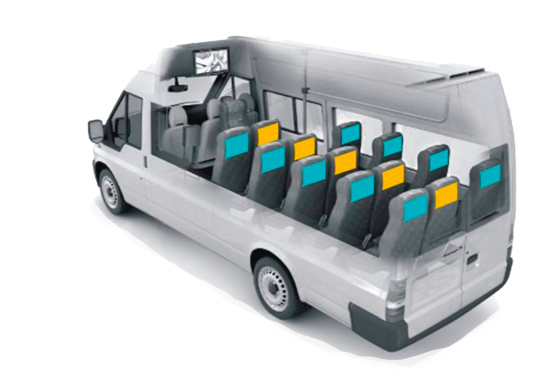Location Targeting for DOOH – How Important is it?
By Gulaiym Agbal
Relevance is of great importance in marketing and advertising. The value of an ad increases manifold if it can be served at the right time when the consumer’s need for information is the greatest. Digital Out-of-Home DOOH campaigns deliver excellent results when executed using location targeting.
Displaying targeted content depending upon the geographical location of the audience can be achieved through geofencing. Geofencing creates a virtual fence over a geographical area and the digital signage content management platform displays content most appropriate for that location.
More than 55 % of location-based ad campaigns use geofencing. This location targeting enables the distribution of the right message at the right time to the right audience. The relevance of the message increases manifold. It can effectively increase sales, brand recall, and brand loyalty.
Geofencing works with stationary DOOH displays and also displays on vehicles that move from one geofenced area to another. Moving screens on buses and taxis give advertisers the opportunity to reach an audience at the right time.
Such location targeted messaging can be used to get viewers into a frame of mind where he or she can take the desired action. For example, it could be an ad for “Happy Hours” at a bar or pub. Customers driven to the establishment through digital signage ads can further be informed of discounts, programs, daily menus, etc. through VODXS faucet-based ads in the washroom. VODXS messages are personalized and topical. A network of geofenced digital displays can serve to draw the audience’s attention to both online and offline properties.
Location based data provides businesses with insights that can help to bring down marketing spend. Today, a prospect’s digital footprints online and at various offline touchpoints leave a trail that savvy marketers can follow and exploit to create personalized communications and memorable brand experiences.
Mobile location data itself is an extremely rich source of information for DOOH marketers. Data can be used in endless ways, for example you can be used to communicate with commuters on trains, buses, and subways.
Mobile location data can be used to create personalized messages at VODXS faucet ad systems installed inside public washrooms. Location based data can be historical or current. Using current data enables do advertisers to flash the most relevant message at a time when the prospect’s desire or need is fresh.
Dynamic content on digital signage use can really drive sales. For such content to be useful and relevant, it needs to be driven by real time location-based data. Location specific data can be coupled with other data such as footfalls in a retail store, path taken by the consumer, products inspected, purchases made, discounts availed, and even facial expressions while checking out a product.
If you know that your target audience is going to be at a given place at a given time, then you can book ad slots. Digital signage advertising slots are sold on the basis of such data.
Location data is extremely useful in measuring the effectiveness of an ad campaign, such as assessing digital signage campaigns across locations for driving footfalls into a store. Such measurements are invaluable in optimizing marketing spends.

